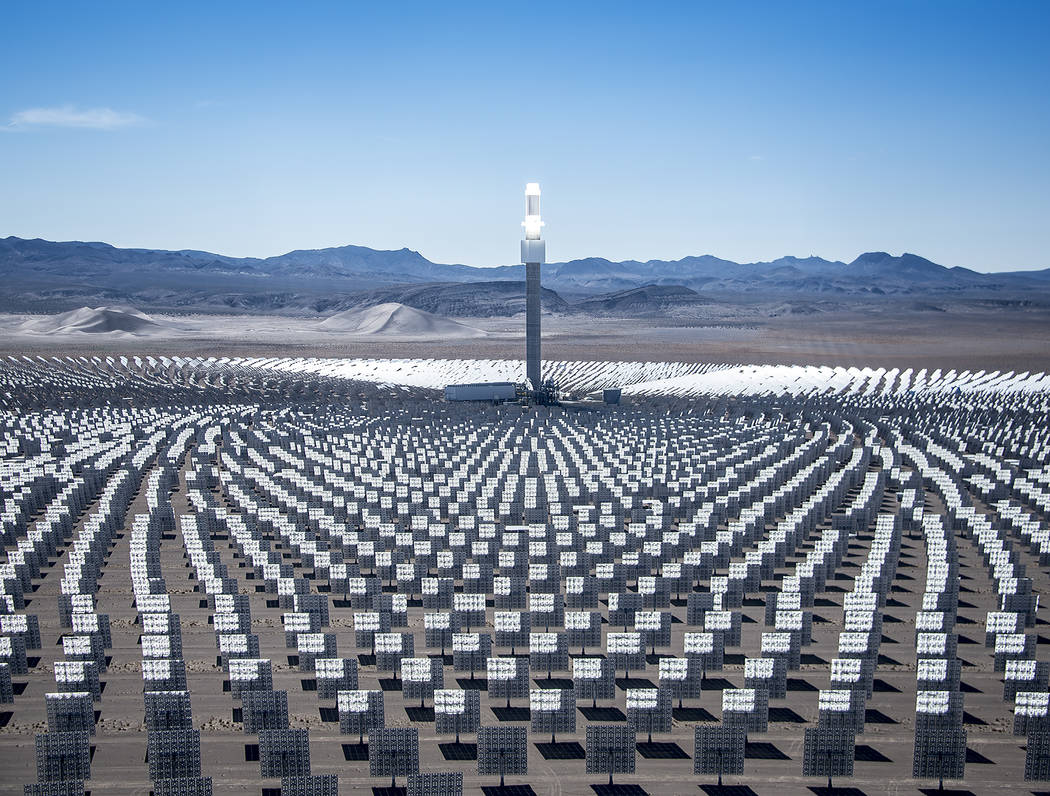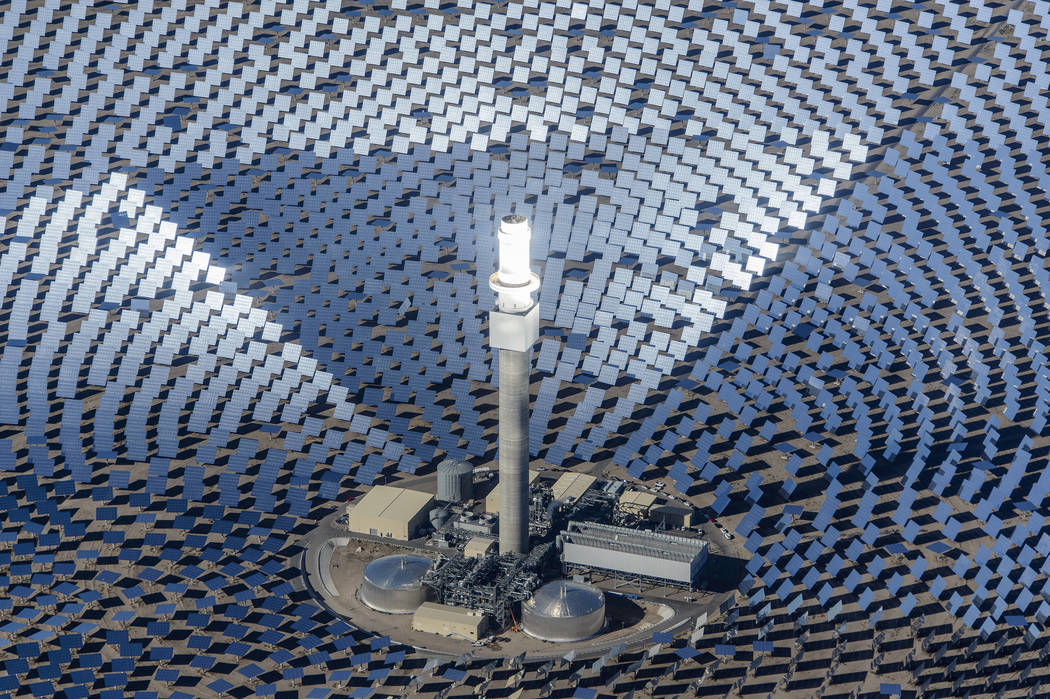Report shows Crescent Dunes earnings grow
Crescent Dunes Solar Energy Project near Tonopah earned slightly over $6.5 million in revenue in the first quarter of 2019, according to a recent federal report.
The report, filed by the parent of the plant, Tonopah Solar Energy LLC with the Federal Regulatory Commission (FERC), showed that the plant generated $6.5 million from Jan. 1 through March 31 of 2019. The most recent earnings are slightly higher than those that were reported in the fourth quarter of 2018, $5.1 million.
Those figures, however, are a far cry from the $12.2 million that was reported over the third quarter in 2018.
During the first quarter of 2019, the average price in megawatts per hour at Crescent Dunes was $139.16 with three lines operating.
Tonopah Solar Energy LLC is a subsidiary of SolarReserve, a Santa Monica, Calif.-based privately held company that calls itself a leading global developer of utility-scale solar power projects, including electricity generation by solar thermal energy and photovoltaic panels.
SolarReserve has said that electricity from Crescent Dunes is sold to NV Energy under a 25-year fixed price contract.
The company’s earnings are reported in Electrical Quarterly Reports (EQR), the reporting mechanism that FERC uses for public utilities to fulfill their responsibility under section 205(c) of the Federal Power Act (FPA) to have their rates and charges on file in a convenient form and place, according to FERC’s website.
The EQR contains seller-provided data summarizing contractual terms and conditions in agreements for all jurisdictional services, including cost-based sales, market-based rate sales, and transmission service, as well as transaction information for short-term and long-term market-based power sales and cost-based power sales, according to FERC’s website.
Recent changes
SolarReserve has undergone a number of changes in recent months.
After SolarReserve CEO Kevin Smith left the company earlier this year, SolarReserve withdrew its application for the proposed Sandstone project in Nye County on Jan. 31. Sandstone would have been the largest solar-thermal power plant in the world with 10 power towers.
The company provided few details on why the application had been pulled. Mary Grikas, who was at the time a spokeswoman of SolarReserve, said that the company plans to file it again later after finalizing environmental and transmission access studies.
The BLM had previously confirmed that SolarReserve could resubmit its application for the project in the future.
If built, Sandstone would deliver a total of 2,000 megawatts of power capacity, 20,000 megawatt-hours of energy storage capability, and 7,000,000 megawatt-hours of annual output powering more than one million homes.
Solar thermal projects use heliostats or mirrors to concentrate sunlight on a tower that heats up molten salt. The heat is used to produce steam.
The Sandstone Project would be built on public land adjacent to Crescent Dunes.
In addition, SolarReserve also scrapped its proposed $461-million project in Port Augusta, Australia after it fell short of securing financing and the government in South Australia canceled a power purchase agreement for the project.
The proposed facility in Australia was one of the projects that SolarReserve had planned in several countries as it sought to increase its global footprint. Two other proposed projects were in South Africa and Chile.

















